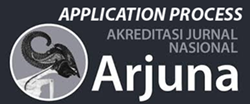Comparison Effectiveness of Concrete and Digital Mathematics Learning Media: Systematic Literature Review on Industrial Revolution 4.0 Era
DOI:
https://doi.org/10.59653/jemls.v2i03.963Keywords:
Concrete learning media, Digital Learning Media, Industrial Revolution 4.0.Abstract
Industrial Revolution 4. 0. Technological developments affect all aspects of human life, as well as education. Therefore, innovation is needed to achieve learning objectives. The goal is to produce a competitive workforce equipped with skills known as the 4Cs (communication, collaboration, critical thinking and problem solving, creativity and innovation). Reforms in the field of mathematics education to achieve the intended expectations include the use of tangible digital educational media. Researchers conducted research using systematic literature review methods to find out the latest facts about concrete and digital mathematics learning media in the era of the Industrial Revolution 4. 0. We interpret a total of 30 articles from various databases and make an overview of the use, advantages and disadvantages of digital and real mathematics educational media in the era of the Industrial Revolution 4. 0. The benefits of real educational media include improving students' problem-solving, creative and thinking skills, and visual reasoning. The advantages of digital learning media include efficiency and efficiency when learning mathematics, allowing for face-to-face (distance) learning, and eliminating the need for certain treatments. The shortcomings of concrete learning media require more consideration so that it takes a long time.
Downloads
References
Cotet, G. B., Carutasu, N. L., & Chiscop, F. (2020). Industry 4.0 diagnosis from an imillennial educational perspective. Education Sciences, 10(1). https://doi.org/10.3390/educsci10010021
Dewi, W. A. F. (2020). Dampak COVID-19 terhadap Implementasi Pembelajaran Daring di Sekolah Dasar. EDUKATIF : JURNAL ILMU PENDIDIKAN, 2(1), 55–61. https://doi.org/10.31004/edukatif.v2i1.89
Ekajana, I. K. S., & Sujana, I. G. (2017). METODE INKUIRI BERBANTUAN MEDIA BENDA KONKRET DALAM MENINGKATKAN HASIL BELAJAR MATEMATIKA SISWA SEKOLAH DASAR. Jurnal Penelitian Dan Pengembangan Pendidikan, 1(3). https://doi.org/10.23887/jppp.v1i3.12628
Hidayah, I., Dwijanto, & Istiandaru, A. (2018). Manipulatives and Question Series for Elementary School Mathematics Teaching on Solid Geometry. International Journal of Instruction, 11(3), 649-662. https://doi.org/10.12973/iji.2018.11344a
Khan, K. S., Kunz, R., Kleijnen, J., & Antes, G. (2003). Five Steps to Conducting a Systematic Review. Journal of the Royal Society of Medicine, 96(3), 118–121. https://doi.org/10.1177/014107680309600304
Kim, Y., & Park, M. (2018). Creating a Virtual World for Mathematics. Journal of Education and Training Studies, 6(12), 172-183. doi:http://dx.doi.org/10.11114/jets.v6i12.3601
Lagrange, J. B., & Kynigos, C. (2014). Digital technologies to teach and learn mathematics: Context and re-contextualization. Educational Studies in Mathematics, 85(3), 381–403. https://doi.org/10.1007/s10649-013-9525
Laski, E. V., Jor’dan, J. R., Daoust, C., & Murray, A. K. (2015). What Makes Mathematics Manipulatives Effective? Lessons From Cognitive Science and Montessori Education. Sage Open, 5(2). https://doi.org/10.1177/2158244015589588
Moyer-Packenham, P. S. & Westenskow, A. (2013). Effects of Virtual Manipulatives on Student Achievement and Mathematics Learning. International Journal of Virtual and Personal Learning Environments (IJVPLE), 4(3), 35-50. http://doi.org/10.4018/jvple.2013070103
Moyer, P. S. (2001). Are we having fun yet? How teachers use manipulatives to teach mathematics. Educational Studies in Mathematics, 47(2), 175–197. https://doi.org/10.1023/A:1014596316942
Nurdin, E., Ma’aruf, A., Amir, Z., Risnawati, R., Noviarni, N., & Azmi, M. (2019). Pemanfaatan video pembelajaran berbasis Geogebra untuk meningkatkan kemampuan pemahaman konsep matematis siswa SMK. Jurnal Riset Pendidikan Matematika, 6(1), 87-98. doi:https://doi.org/10.21831/jrpm.v6i1.18421
Parmiti, D. P., & Arnawa, I. K. T. (2017). Penerapan Metode Inkuiri Berbantuan Media Benda Konkret Dapat Meningkatkan Hasil Belajar Matematika. Journal of Education Action Research, 1(2), 108–121. https://doi.org/10.23887/jear.v1i2.12044
Paseleng, M. C., & Arfiyani, R. (2015). Pengimplementasian Media Pembelajaran Berbasis Multimedia Interaktif pada Mata Pelajaran Matematika di Sekolah Dasar. Scholaria: Jurnal Pendidikan Dan Kebudayaan, 5(2), 131–149. https://doi.org/10.24246/j.scholaria.2015.v5.i2.p131-149
Sadikin, A. ., & Hamidah, A. (2020). Pembelajaran Daring di Tengah Wabah Covid-19: (Online Learning in the Middle of the Covid-19 Pandemic). BIODIK, 6(2), 214-224. https://doi.org/10.22437/bio.v6i2.9759
Sangpom, W., Suthisung, N., Kongthip, Y., & Inprasitha, M. (2016). Advanced Mathematical Thinking and Students’ Mathematical Learning: Reflection from Students’ Problem-Solving in Mathematics Classroom. Journal of Education and Learning, 5(3), 72. https://doi.org/10.5539/jel.v5n3p72
Setyawan, D. (2020). Meningkatan Hasil Belajar Siswa Menggunakan Realistic Mathematics Education (RME) Berbantuan Media Konkrit . Jurnal Bidang Pendidikan Dasar, 4(2), 155–163. https://doi.org/10.21067/jbpd.v4i2.4473
Sefnita Eka Sutarti, N. P., & Citra Wibawa, I. M. (2018). Penerapan Model Pembelajaran Inkuiri Berbantuan Media Konkret Untuk Meningkatkan Hasil Belajar Muatan Pelajaran Matematika. Journal of Education Action Research, 2(4), 295–305. https://doi.org/10.23887/jear.v2i4.16319
Tennyson, R. D. (2010). Historical Reflection on Learning Theories and Instructional Design. Contemporary Educational Technology, 1(1), 1-16. https://doi.org/10.30935/cedtech/5958
Downloads
Published
How to Cite
Issue
Section
License
Copyright (c) 2024 Mohamad Wegik Pulungsari, Isti Hidayah

This work is licensed under a Creative Commons Attribution-ShareAlike 4.0 International License.
Authors who publish with this journal agree to the following terms:
- Authors retain copyright and grant the journal right of first publication with the work simultaneously licensed under a Creative Commons Attribution-ShareAlike that allows others to share the work with an acknowledgement of the work's authorship and initial publication in this journal.
- Authors are able to enter into separate, additional contractual arrangements for the non-exclusive distribution of the journal's published version of the work (e.g., post it to an institutional repository or publish it in a book), with an acknowledgement of its initial publication in this journal.
- Authors are permitted and encouraged to post their work online (e.g., in institutional repositories or on their website) prior to and during the submission process, as it can lead to productive exchanges, as well as earlier and greater citation of published work (See The Effect of Open Access).
























